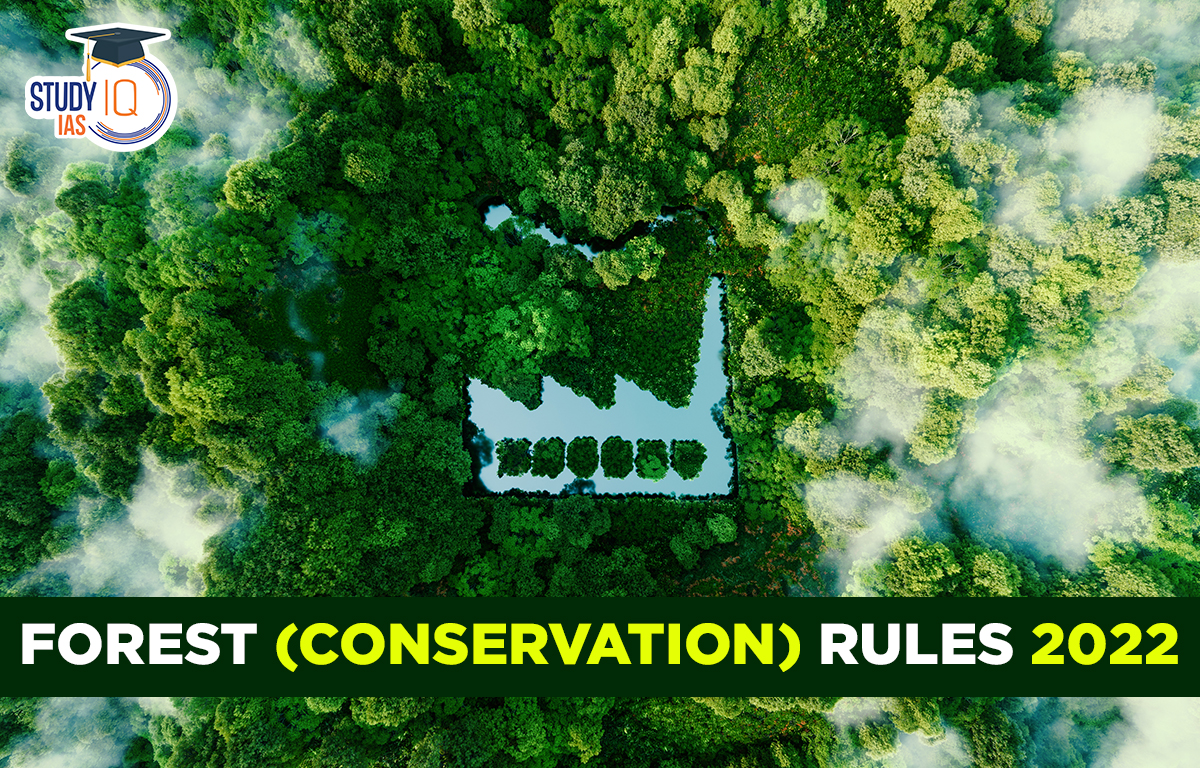Table of Contents
Context: National Commission for Scheduled Tribes (NCST) had recommended to the Union Environment and Forest Ministry to put the new Forest Conservation Rules, 2022.
About Forest Conservation Act 1980 Summary
- It was enacted by the parliament to control the ongoing deforestation in India.
- It is the principal legislation that regulates deforestation in India.
- Objectives: To protect the forest including its flora, fauna and other diverse ecological components while preserving the integrity and territory of the forests.
- Facilitate the growth of forest biodiversity.
- Prevent conversion of forest land into non-forested activities like agricultural, grazing or for any other commercial purposes and intentions.
About Forest Conservation Rules 2022 Explained in Details
- Rules were issued by the Environment Ministry in June, 2022 under the Forest Conservation Act.
- Approval: For forest land beyond five hectares, approval for diverting land must be given by the Central government.
- This is done via Forest Advisory Committee (FAC). Once the FAC is convinced and approves (or rejects a proposal), it is forwarded to the concerned State government where the land is located, who then has to ensure that provisions of the Forest Right Act, 2006 (To protect the rights of forest dwellers and tribals over their land) are complied with.
- The FAC approval means that the future users of the land must provide compensatory land for afforestation as well as pay the net present value (ranging between Rs 10-15 lakh per hectare.)
- Shift of responsibility: The rules shift the responsibility of the Union government to take the consent of inhabitants (before the approval of a project) onto the State Governments.
- It means that the burden to ensure the rights of Scheduled Tribes to their traditional forest lands is now with the State Governments.
- A project, once approved by the FAC, will then be passed on to the State authorities who will collect the compensatory fund and process it for final approval.
- The new rules allow the Union Government to permit the clearing of a forest before consulting its inhabitants.
- Beforehand permission: The handover of the forest can be approved and the Union Government can collect payment for compensatory afforestation from the private developer even before the State Government ensures consent of the forest dwellers.
- Plantations: The rules make a provision for private parties to cultivate plantations and sell them as land to companies who need to meet compensatory afforestation targets.
Concern of NCST over Forest Conservation Rules 2022
- Rules 2022 violate the FRA in “the processes of setting up land banks and accredited compensatory afforestation”.
- It compromised the dwellers’ rights given under flagship FRA.
- It pointed out that the FCR 2022 had done away with the clause to mandatorily seek consent of Gram Sabhas before the Stage 1 clearance, leaving this process to be done later and even after Stage 2 clearance.
- Requirement for consent and recognition of rights provided a legal space for ensuring completion of the processes for recognition and vesting of rights under the FRA in areas where forests are being diverted
- Supreme Court’s Niyamgiri judgment of 2013 and the 2014 and 2017 FC Amendment Rules uphold the principle that diversion of forests under FCA stand amended in the light of FRA to recognize the forest rights of STs and OTFDs.
- NCST has asked the government to “reinstate, strengthen and strictly monitor” the implementation of Rules 2017 to grant the FRA rights to STs and other traditional forest dwellers (OTFDs) on forest land proposed for diversion.
About National Commission for Scheduled Tribes (NCST)
- It is a constitutional body (Article 338A) that was established by the Constitution (89th Amendment) Act, 2003.
- The Commission is an authority working for the economic development of Scheduled Tribes in India.
- Aim: To oversee the implementation of various safeguards provided to Scheduled Tribes and to evaluate the working of such safeguards.
- Constitution of India under Clause (5) of Article 338A has assigned the following duties and functions to the Commission:
- To investigate and monitor all matters relating to the safeguards provided for the Schedule Tribes under the Constitution or under any other law for the time being in force or under any order of the Government and to evaluate the working of such safeguards.
- To inquire into specific complaints with respect to the deprivation of rights and safeguards of the Scheduled Tribes.
- To participate and advice in the planning process of socio-economic development of the Scheduled Tribes and to evaluate the progress of their development under the Union and any State.


 Daily Quiz 19 April 2025
Daily Quiz 19 April 2025
 Vehicle-to-Grid (V2G) Technology and its...
Vehicle-to-Grid (V2G) Technology and its...
 Waqf Act (Amendment) 2025: Key Highlight...
Waqf Act (Amendment) 2025: Key Highlight...





















